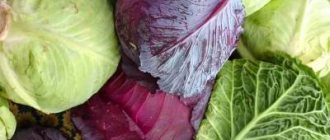Potatoes are one of the most frequent guests on our table. To eat quality vegetables all year round, it is important to preserve them properly. The harvest is kept not only in the cellar, but also in the apartment: the corridor, pantry, on the balcony, kitchen and in the refrigerator.
To prevent the tubers from rotting and starting to germinate, they are provided with optimal conditions: temperature, humidity level and air circulation.
Timing for harvesting potatoes for winter storage
Only ripened tubers are stored well . The signal for harvesting is the drying of the leaves. Experienced summer residents wait about a month until the tops are completely dry. Only dig up vegetables in sunny, dry weather to reduce the risk of rotting in the future.
Early varieties are harvested in late July - early August, mid-season varieties - until the end of summer, late varieties - from late August to the first weeks of September.
The best varieties
Each variety of this root vegetable differs in starch content. If the potatoes are well boiled, this means that they have a fairly large amount of this substance. Foreign companies have special labeling, according to which the purpose of this root vegetable is adjusted. The least digestible variety is marked with the letter “A”. It is suitable for soups. The "B" variety is used for making potato chips, while the "C" variety is ideal for frying. When preparing mashed potatoes, naturally, you will need the most boiled type of potato, marked with the letter “D”. Root vegetables with a high starch content are best preserved.
For winter planting, as a rule, late-ripening varieties are used. These include such popular species as “crane fly”, “asterix”, “lorch”, “stonefly” and “picasso”.
Preparation for storage
Preparing potatoes is extremely important and consists of several stages :
- The dug up tubers are placed on a polyethylene flooring in one layer in the open air and dried for about a day. This will rid the supplies of microorganisms and remove excess moisture.
- The potatoes are finally cleared of soil and sorted. Separate specimens with mold, signs of insects, or mechanical damage from healthy tubers. Vegetables are also sorted by variety to take into account shelf life. Early crops are used first.
- The harvest is placed on film under a canopy and left to dry for another day.
After this, the vegetables are placed in boxes or bags for winter storage .
Tara
You can use both homemade boxes made from boards (timbers) and special purchased boxes. Choose containers with holes so that they allow air to pass through, but not light. Wicker baskets made from natural materials are also suitable, helping to maintain optimal humidity.
For large quantities of potatoes, bags made of canvas or synthetic mesh will do. These materials allow the tubers to “breathe”. Plastic bags are not suitable, as they are not ventilated and contribute to rapid spoilage of potatoes.
Proper storage of the harvest will allow you to enjoy the delicious product for several months until late spring.
Optimal conditions
To ensure that potatoes are edible for as long as possible, the following conditions must be observed::
- check that pests (rats, mice, insects) do not enter the storage;
- create an optimal microclimate (+2...+4°C, 75–80% humidity);
- for storage choose wooden boxes with flooring, nets or canvas bags;
- sort the tubers once every 1–1.5 months.
Lighting
Potatoes are afraid of light, so under no circumstances leave them in a bright place for a long time. Perhaps you noticed how the tubers peeking out of the ground took on a green color? This occurs due to the production of the toxic substance solanine, which is harmful not only to pathogenic bacteria, but also to humans.
Green potatoes cannot be eaten, so we recommend placing the product in closed containers. This will prevent not only the production of solanine, but also the germination of shoots.
Storing in the refrigerator or freezer
Although storing potatoes in the refrigerator is convenient and easy, it will not be possible to fit the entire crop on the shelves. In addition, low temperatures and condensation can have a detrimental effect on the taste of tubers.
How long
The shelf life of potatoes in the refrigerator is short, 5–10 days . Therefore, it is better to place vegetables in small batches, 2-3 kg each. This amount is eaten in about 1.5 weeks.
in the freezer for 10-15 days, prepared whole or in strips - 3-6 months.
In any form
Raw potatoes are kept on special vegetable shelves for a week . The tubers are first checked for damage and cleared of soil.
Peeled vegetables quickly darken when exposed to air.
To keep the product fresh longer, do the following :
- The tubers are washed and then placed in a container with cold water. At room temperature, this will increase the shelf life of potatoes by 4 hours, in the refrigerator - by a day.
- Vegetables are washed and thoroughly dried with paper towels, placed in vacuum bags, tightly sealed and placed in the freezer.
The shelf life of boiled potatoes in the refrigerator is 3-4 days.
Important! The vegetable cannot be stored as part of other dishes for more than 2 days.
Why not
Although cold is the main assistant when storing food, it is destructive for long-term storage of potatoes :
- at low temperatures, starch turns into glucose and gives potatoes a sweetish taste;
- Condensation formed due to warm air causes vegetables to become damp and begin to rot.
How best to store
In the refrigerator, the tubers are kept on the bottom shelf for vegetables at a temperature of +5°C ; boiled, fried and raw potatoes are stored in the freezer. Before being placed in the chamber, the vegetables are blanched, dipped in boiling water, and then in ice water, dried with paper towels and placed in containers.
By the way! To freeze fried potatoes, cool them completely and remove excess fat with napkins.
A little history
Peter the Great brought potatoes to decorate flower beds and court lawns. With his appearance, peasants and commoners developed an unsophisticated belief. After all, potatoes have eyes, so eating them means eating a human soul. It is for this reason that it did not gain popularity in those days. Under no circumstances did people agree to grow it, much less cook it as food. The kings of many countries went to various lengths, offering rewards, gold, medals, lands. But nothing could influence the peasants. Only after 1850 this product was tested and began to be planted en masse throughout Russia and in other countries.
Potatoes are a finicky product, because if stored incorrectly, they can freeze or become flabby. If this happens, then all you have to do is throw it away, because harmful substances and poisons accumulate in it. She is no longer capable of producing offspring, that is, she is unsuitable for planting.
How to store potatoes in an apartment
In the absence of a cellar, the harvest is kept until spring at home.
In the corridor
Although storing potatoes in an apartment allows you to always have access to the crop, it is complicated by some problems.
The temperature in the corridor is constantly changing, supplies suffer from the cold air that is let in when the door is opened. Vegetables are threatened by dirt and water from shoes and umbrellas.
In such conditions, the optimal humidity level (75–80%) is monitored . To prevent the tubers from fogging up and to keep them clean, they are covered with burlap. If the apartment is hot, place a container of water next to the crop.
At the entrance
The entrance of an apartment building allows you to store large volumes of potatoes , but the first danger of such conditions is the people living nearby. To prevent anyone from stealing supplies, the box with them is locked and secured to the floor.
Important! In winter, emergency situations often arise at the entrance: sewerage leaks, pipes burst. This negatively affects the quality of the tubers.
At room temperature
Room temperature is not suitable for long-term storage of potatoes : it is much higher than the optimal +2..+4°C, so the tubers rot, dry out or sprout. The shelf life of vegetables in such conditions is 10–14 days.
In the pantry
How to store potatoes in an apartment for the winter? A storage room is the best option : a constant climate is maintained here and the sun’s rays do not enter the room.
Tubers do not germinate, do not turn green and do not rot . Keep the harvest in wooden boxes with holes or nets for sufficient air circulation.
If the air in the pantry is too dry, increase the humidity to 75–80% with a spray bottle , a damp cloth, or an open bottle of water left in the room.
In the kitchen
Due to the small kitchen area, vegetables are often kept under the sink. The main advantage of this method is that the potatoes will be in close proximity to the cooking area . However, if the plumbing is faulty and condensation accumulates under the sink, the tubers will quickly rot. Pests also spoil the crop.
Important! The space under the sink should be well ventilated.
Vegetables are placed in wicker baskets or wooden boxes with holes.
On the balcony
The balcony is a common place to store potatoes at home. Large boxes of vegetables are placed here, and the relatively constant temperature allows the tubers to remain fresh until spring.
Choosing a balcony
Even on a glazed balcony it is often cold in winter , especially during January frosts, so a heated room is better suited.
The presence of temperature sensors will help create an optimal microclimate for the tubers (+2…+4°C). It is impossible to create suitable conditions for the harvest on an open balcony without special tools and containers - the tubers will be affected by cold weather, so preference is given to a glazed space.
How long do potatoes last?
At suitable temperature, humidity and air circulation on the balcony, the tubers will remain fresh until spring. If such conditions are not created, the potatoes will last about 1-2 months, until the first autumn showers.
Humidity
Potatoes are a finicky product, which means if you want to preserve the crop for a long time, control not only the temperature, but also the humidity. When it decreases, the fruits become flabby, which impairs their nutritional value. With excessive humidity and insufficient ventilation, potatoes begin to rot.
If the room is warm and damp, the tubers begin to germinate quickly, and the amount of vitamins in them decreases sharply. They can no longer be eaten with the peel due to the risk of poisoning.
The optimal humidity for storing potatoes is from 80 to 90%. The place where the crop lies should be ventilated periodically. Do not place containers against walls if condensation is noticed on them. To avoid rotting, cover the tubers with sawdust.
How to extend storage
To keep potatoes fresh until spring, a number of conditions must be observed.:
- Maintain the temperature at +2..+4°C. At higher rates, vegetables will begin to sprout; at lower rates, they will freeze.
- Provide air humidity of 70–85%. This will prevent the tubers from rotting.
- Choose a room with good ventilation.
- They isolate the crop from exposure to light: due to direct sunlight, potatoes produce a toxic substance - solanine. Green tubers are immediately disposed of.
- The bottom of the storage is covered with sand. It will absorb excess moisture and prevent vegetables from rotting.
Which potatoes last longer?
Sort through the tubers and leave only those that meet the following parameters:
- Firm to the touch. If the potato feels soft when you squeeze it, the starch inside has already begun to break down. Such tubers will not last long.
- With smooth dense skin. The peel protects the potatoes from the penetration of excess moisture and oxidation. The more reliable this protection is, the longer the potato will retain its nutritional properties.
- No dark spots or visible damage. Any damage to the skin or change in color is a sign that the tuber has already begun to deteriorate.
- No sprouts. As potatoes sprout, they use up the nutrients they contain. Starch also begins to break down. Potatoes with sprouts will quickly become F. Nourian, H. S. Ramaswamy, A. C. Kushalappa. Kinetics of quality change associated with potatoes stored at different temperatures / Kinetics of quality change associated with potatoes stored at different temperatures tasteless.
How to keep potatoes
How to properly store potatoes in an apartment? Depending on the conditions, vegetables are kept in boxes or mesh bags .
In wooden boxes
Boxes without heating are kept in an apartment, basement or on a glazed heated balcony . Such containers will provide the necessary ventilation, and the tree will not allow the tubers to become damp.
The box can be put together from scrap boards, old furniture, or purchased ready-made.
Healthy! Sometimes the container is insulated with polystyrene foam, foil or warm cloth, tightly closing all holes. This will protect the crop from cold snaps, but will reduce ventilation. To prevent vegetables from getting damp, they are sorted regularly.
For vegetables they sell special boxes with automatic temperature control . They are more expensive and require some work skills, but they are guaranteed to save supplies until spring.
In plastic boxes
Such containers are available and inexpensive, but do not contain holes for ventilation. Plastic is an artificial material that does not allow air or moisture to pass through , which creates a greenhouse effect.
To eliminate this drawback, make small holes in the walls of the box , pour sand or put hay on the bottom.
Important! Such containers are not suitable for use on the street or in the entrance.
other methods
When storing in a warm barn or pantry, use regular nets.
(thermal containers) of different sizes, equipped with foil insulation on the inside, are suitable for balconies This device is quite compact and allows you to store vegetables for a long time. Models are sold with temperature sensors and heating elements that will raise the temperature inside the backpack if supplies are kept on an unheated balcony.
Temperature
Potatoes do not like heat and do not tolerate frost. The optimal temperature for its storage is from 2 to 4°C, but it is difficult to create suitable conditions in an apartment. When it gets cold (-2°C), if the potatoes are on the balcony or loggia, they must be brought into the apartment. Avoid freezing of tubers: it is best to do this with a thermometer. Put it in a container and check it regularly.
Do not place crops near heating devices. Potatoes that are kept warm dry out quickly. The moisture evaporates from it and the product becomes unfit for consumption. The maximum storage temperature is 18°C, provided that the tuber is stored in a closed container.
Common Mistakes
When storing potatoes at home and on the balcony, the following mistakes are made :
- The tubers are not sorted carefully enough. It is important to get rid of damaged specimens and use only whole and healthy ones.
- Keep potatoes together with other vegetables. The ideal neighbor for a vegetable is beets; they are laid out as a top layer to absorb excess moisture.
- Containers are not disinfected. To preserve the harvest, it is recommended to treat boxes and bags with a solution of potassium permanganate.
Sorting
Before storing the tubers, they are carefully sorted by size. Separate damaged, cut fruits from the main harvest - they should be eaten first, because they are not stored for a long time. Medium-sized potatoes last the longest without signs of disease and with intact skin.
It is worth setting aside small tuber crops for planting until next year. Check the crop periodically, throwing out any green or rotten specimens.
Where to buy and what to look for?
When purchasing a container for potatoes, you need to focus on its price. The average cost of wooden boxes is 500 rubles. Plastic structures are cheaper, they can be purchased for 200 rubles. Wicker boxes will cost 1,500 rubles.
Top 3 best models
The most practical boxes for storing potatoes:
BranQ vegetable container transparent
The container is made of plastic . The top is open, which ensures food ventilation. By stacking containers on top of each other, you can save space. Once the drawer is empty, it can be used to store kitchen utensils. Price - from 396 rubles. Read reviews here.
Alternative M604, 650x415x395 mm
The mesh design ensures high-quality ventilation and crop safety. For convenient transportation, the container is equipped with handles. Price 1500 rubles.
Wooden box 31x23x16 cm
A stylish compact storage box will be an excellent solution for the kitchen. The product is made from solid pine needles and is highly durable and reliable .
Capacity up to 12 l. Price – 500 rubles. Read reviews here.











